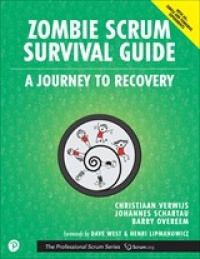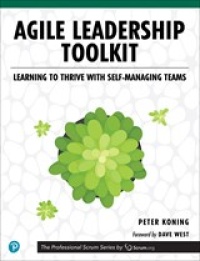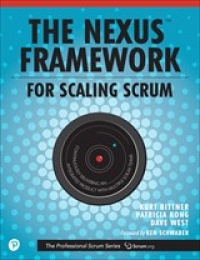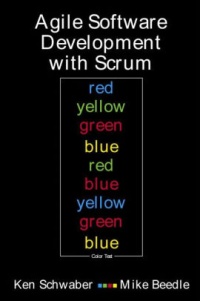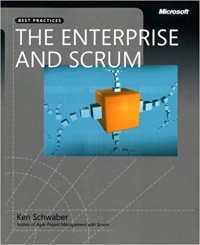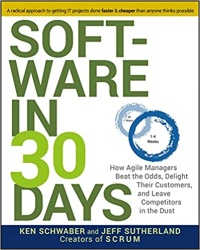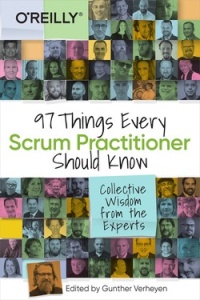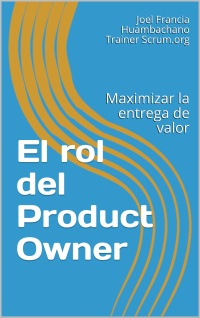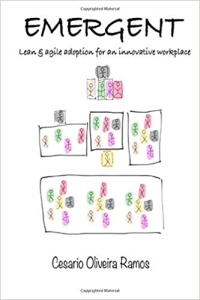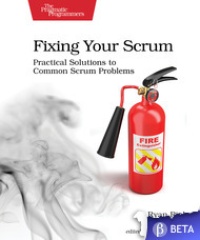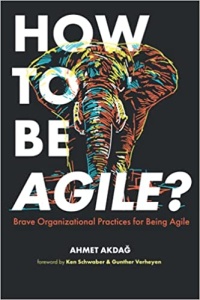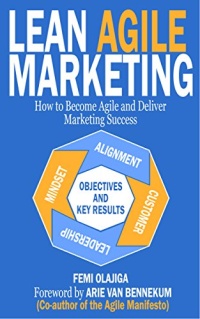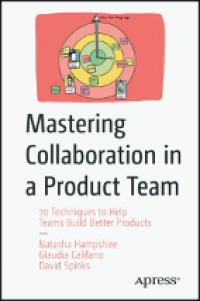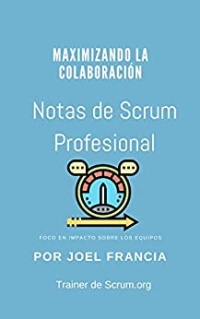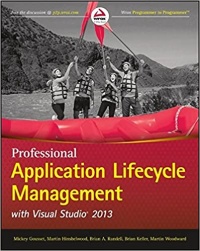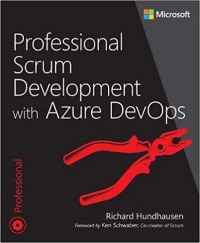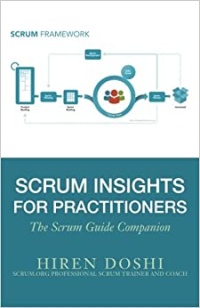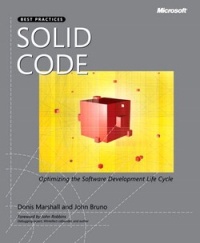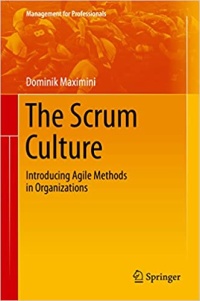Books By Our Professional Scrum Trainers and Team
The Professional Scrum Series
Mastering Professional Scrum
by Stephanie Ockerman and Simon Reindl
A Practitioners Guide to Overcoming Challenges and Maximizing the Benefits of Agility
Mastering Professional Scrum is for anyone who wants to deliver increased value by using Scrum more effectively. The authors draw on years of Scrum training and coaching to help you return to first principles and apply Scrum with the professionalism required to achieve its transformative potential.
The Scrum Anti-Patterns Guide
The Scrum Anti-Patterns Guide compiles the most common challenges that every Scrum Team faces and how to remedy them. Stefan Wolpers uses the Scrum Guide as a template to structure the content, thus supporting the junior practitioners Scrum discovery journey (categorized by roles, events, artifacts, and commitments) while allowing the more experienced reader to use the book to reference individual problems or situations.
The Professional Product Owner
by Don McGreal and Ralph Jocham
Drawing on a combined 40+ years of agile experience, Don McGreal and Ralph Jocham guide you through all facets of envisioning, emerging, and maturing a product with Scrum. You’ll learn how to plan strategy, manage complexity, continuously deliver value, and implement concrete best-practices for managing backlogs and releases. Throughout, the authors’ personal anecdotes help you recognize and overcome obstacles to success, whatever your Scrum or product management experience.
Practical Product Management for Product Owners
by Chris Lukassen and Robbin Schuurman
Chris Lukassen and Robbin Schuurman introduce powerful tools, ideas, and skills for delivering superior products and services, and for avoiding pitfalls that keep you from seeing what customers really need and want. Learn through a start-to-finish, Scrum-based case study, drawing on concepts the authors created for their breakthrough Scrum.org Professional Scrum Product Owner-Advanced (PSPO-A) training course. This innovative approach has already helped thousands of product owners excel--and it can transform the way you create products.
Unlocking Business Agility with Evidence-Based Management: Satisfy Customers and Improve Organizational Effectiveness
by Patricia Kong, Todd Miller, Kurt Bittner, Ryan Ripley
In a world of uncertainties, organizations need to be capable of reinventing themselves every day based on new information. In Unlocking Business Agility with Evidence-Based Management, authors Patricia Kong, Todd Miller, Kurt Bittner, and Ryan Ripley use the framework developed by Scrum.org called Evidence-Based Management (EBM). EBM is an empirical approach that helps organizations use experimentation and rapid feedback to progress toward goals. This path is not always obvious or straightforward, but that is a benefit: in a complex and changing world, the path toward goals will always be uncertain. EBM helps organizations use new data to adapt their plan toward their goals.
Facilitating Professional Scrum Teams
by Patricia Kong, Glaudia Califano and David Spinks
Unlock the true power of collaboration within Scrum Teams and beyond with this practical guide packed with tips, tools, and real-life scenarios to elevate your facilitation skills.
The Professional Scrum Team
by Peter Götz, Uwe M. Schirmer, Kurt Bittner
Teams and individuals find the rules of the Scrum Framework to be easy to describe but challenging to implement. The Professional Scrum Team helps you bring the Scrum Framework rules to life in your everyday work, optimizing both team and individual performance and creating more value.
The Professional Agile Leader
by Ron Eringa, Kurt Bittner, Laurens Bonnema
The Professional Agile Leader is a realistic, practical guide, written by three Scrum pioneers who demonstrate proven ways to foster responsive and adaptive team cultures. They structure powerful lessons around a case study based on decades of experience helping agile leaders achieve and sustain transformations. Their strategic deep dives reveal how to rediscover the customer, shift from output to impact, convert predictable existential crises into opportunities, grow leaders everywhere, and much more. Best of all, they never settle for high-level hand-waving--they show you how it's really done.
Zombie Scrum Survival Guide
by Christiaan Verwijs, Johannes Schartau, Barry Overeem
Zombie Scrum Survival Guide reveals why Scrum runs aground and shows how to supercharge your Scrum outcomes, while having a lot more fun along the way. Humorous, visual, and extremely relatable, it offers practical approaches, exercises, and tools for escaping Zombie Scrum. Even if youre surrounded by skeptics, this book will be the antidote to help you build more of what users need, ship faster, improve more continuously, interact more successfully in any team, and feel a whole lot better about what youre doing. Suddenly, one day soon, youll remember: thats why we adopted Scrum in the first place!
Agile Leadership Toolkit
by Peter Koning
If you lead in organizations that have adopted agile methods, you know it’s crucial to create the right environment for your agile teams. Traditional tools such as Gantt charts, detailed plans, and internal KPIs aren’t adequate for complex and fast-changing markets, but merely trusting employees and teams to self-manage is insufficient as well.
Nexus Framework for Scaling Scrum, The: Continuously Delivering an Integrated Product with Multiple Scrum Teams
by Kurt Bittner, Patricia Kong, Dave West
Today, organizations want to scale Scrum to ever larger and more complex projects, driving the benefits of agility throughout the enterprise. But most conventional solutions to scaling agility have added complexity and deviated from the principles that make Scrum so attractive. The Nexus Framework for Scaling Scrum introduces a better approach, reflecting the authors' many years of applying and scaling Scrum in multiple industries.
Books by Ken Schwaber
Agile Software Development with Scrum
by Ken Schwaber and Mike Beedle
eXtreme Programming is an ideal many software shops would love to reach, but with the constant pressures to produce software quickly, they cannot actually implement it. The Agile software process allows a company to implement eXtreme Programming quickly and immediately-and to begin producing software incrementally in as little as 30 days! Implementing eXtreme Programming is easier said than done. The process can be time consuming and actually slow down current software projects that are in process. This book shows readers how to use SCRUM, an Agile software development process, to quickly and seamlessly implement XP in their shop-while still producing actual software. Using SCRUM and the Agile process can virtually eliminate all downtime during an XP implementation.
Agile Project Management with Scrum
by Ken Schwaber
The rules and practices for Scrum—a simple process for managing complex projects—are few, straightforward, and easy to learn. But Scrum’s simplicity itself—its lack of prescription—can be disarming, and new practitioners often find themselves reverting to old project management habits and tools and yielding lesser results. In this illuminating series of case studies, Scrum co-creator and evangelist Ken Schwaber identifies the real-world lessons—the successes and failures—culled from his years of experience coaching companies in agile project management.
The Enterprise and Scrum
by Ken Schwaber
It’s time to extend the benefits of Scrum—greater agility, higher-quality products, and lower costs—from individual teams to your entire enterprise. However, with Scrum’s lack of prescribed rules, the friction of change can be challenging as people struggle to break from old project management habits. In this book, agile-process revolution leader Ken Schwaber takes you through change management—for your organizational and interpersonal processes—explaining how to successfully adopt Scrum across your entire organization.
Software in 30 Days
by Ken Schwaber and Jeff Sutherland
Software in 30 Days summarizes the Agile and Scrum software development method, which allows creation of game-changing software, in just 30 days. Projects that use it are three times more successful than those that don't. Software in 30 Days is for the business manager, the entrepreneur, the product development manager, or IT manager who wants to develop software better and faster than they now believe possible. Learn how this unorthodox process works, how to get started, and how to succeed. Control risk, manage projects, and have your people succeed with simple but profound shifts in the thinking.
Additional Books written by Professional Scrum Trainers
97 Things Every Scrum Practitioner Should Know
by Gunther Verheyen and the Scrum Community
This is not a book from which to learn Scrum. Instead, it offers insights into the rules and roles of the Scrum framework and their purpose, as well as tactics, strategies, and patterns to apply with Scrum, stories from the trenches, and some perspectives on Scrum that go beyond...Scrum.
Find translations here
Agile Development in Practice
by Ian Mitchell
This book tells you what agile practice is really about, and how to achieve it. The essential components of an agile way of working are laid out chapter by chapter. The book concludes with a concise treatment of the agile transformation problem, and shows how to leverage agile patterns and practices in order to resolve it.
Applying Scrum with Kanban
by Andy Hiles
The story follows Katie as an experienced Scrum Master struggling to satisfy the demands of the stakeholders and the management team in her organization. After a particularly difficult day at work Katie realizes that the answer she has been looking for has been hiding in plain sight all along.
With the help of the rest of the Scrum Team and a bit of guidance from an experienced coach, Katie soon learns the power of combining both Scrum and Kanban to maximize value and leverage flow.
Choose Agility
by Mathieu Boisvert and others
The main thrust of this book is to guide organizations in their transition to agile methods. The expected benefits are the quality of the product mogiciel, the time to market, the commitment of the teams and the improvement of their productivity.
El Rol del Product Owner: Maximizar la entrega de valor (Spanish Edition)
Los cambios en la forma en que los clientes usamos los productos y la preferencia por los mismos han cambiado drásticamente, los modelos de negocio tradicionales han quedado obsoletos. Ahora el trabajo desde casa es el estándar, tal parece que el mundo cambio de golpe y nadie estaba preparado para esta situación.
La ventaja competitiva actual que muchas empresas tenían y su valor de mercado se ha desplomado instantáneamente y con seguridad muchos planes a mediano y largo plazo quedan rezagados, la reacción en periodos cortos de tiempo lanzando nuevos productos o servicios es el estándar para tratar de salir adelante.
Emergent: Lean & Agile adoption for an innovative workplace
Agile adoption can only be successful when the people themselves create the necessary changes and are committed and feel accountable for it. The goal, vision and reasons for the adoption should be clearly communicated. But the path towards agility can only emerge by walking it.
Fixing Your Scrum
by Ryan Ripley and Todd Miller
Broken Scrum practices limit your organization’s ability to take full advantage of the agility Scrum should bring: The development team isn’t cross-functional or self-organizing, the product owner doesn’t get value for their investment, and stakeholders and customers are left wondering when something—anything—will get delivered. Learn how experienced Scrum masters balance the demands of these three levels of servant leadership, while removing organizational impediments and helping Scrum teams deliver real-world value. Discover how to visualize your work, resolve impediments, and empower your teams to self-organize and deliver using advanced coaching and facilitation techniques that honor and support the Scrum values and agile principles.
How to be Agile: Brave organizational practices for being Agile
by Ahmet Akdag
The best selling book about Agility in Turkey is now in English with forewords written by the Co-Creator of Scrum; Ken Schwaber and the Scrum Caretaker; Gunther Verheyen.
- Why are we doing Agile? What’s the essence?
- Why do we need to change?
- How are we going to begin?
- How are we going to scale it up?
- How can we change the culture?
- Will we be able to make it and how are we going to understand whether it’s success or failure?
- What’s going to happen to the management?
- What are the good practices?
- Is Agile suitable only for information technology?
Lean Agile Marketing: How to Become Agile and Deliver Marketing Success
by David Dame, Julee Bellomo and others
This book contains a step-by-step guide to implementing Agile marketing and also contains relevant case studies and Agile marketing examples. Learn how to increase your productivity, quit multitasking and become proactive, adaptable and Agile in marketing. Contains case studies and examples of how other marketers adopted Agile, you will develop the knowledge, understanding, and confidence required to apply Scrum, Kanban and other Agile frameworks. Agile Marketing explains how to apply agile methodologies to marketing.
Mastering Collaboration in a Product Team
by Natasha Hampshire , Glaudia Califano , David Spinks
Mastering Collaboration in a Product Team is a toolbox of proven techniques from the field for the whole product team to use together to find answers to these questions and more. It is filled with practical tools to maximize your team’s chances of success when developing products and services, from identifying opportunities, to the point of being able to confidently go into production.
Notas de Scrum Professional
by Joel Francia
Hoy en día las organizaciones y las personas nos enfrentamos a un mundo que cambia cada vez con mayor rapidez, la velocidad con que aparecen nuevas tecnologías o productos en el mercado provoca también cambios en los clientes, sus necesidades, gustos, problemas y su forma de usar los productos. Nuevas variables que aparecen, hacen imposible controlar los resultados a partir de lo que conocemos porque lo que no conocemos puede aparecer en cualquier momento.
Professional Application Lifecycle Management with Visual Studio 2013
by Martin Hinshelwood and others
Microsoft's Application Lifecycle Management (ALM) makes software development easier and now features support for iOS, MacOS, Android, and Java development. If you are an application developer, some of the important factors you undoubtedly consider in selecting development frameworks and tools include agility, seamless collaboration capabilities, flexibility, and ease of use. Microsoft's ALM suite of productivity tools includes new functionality and extensibility that are sure to grab your attention. Professional Application Lifecycle Management with Visual Studio 2013 provides in-depth coverage of these new capabilities. Authors Mickey Gousset, Martin Hinshelwood, Brian A. Randell, Brian Keller, and Martin Woodward are Visual Studio and ALM experts, and their hands-on approach makes adopting new ALM functionality easy.
Professional Scrum Development with Azure DevOps
This guide can help any development team plan, track, and manage work far more effectively, by combining today’s leading agile framework (Scrum) and Microsoft’s ALM/DevOps toolset (Azure DevOps). Renowned Scrum expert Richard Hundhausen thoroughly covers team formation, backlogs, Sprints, test plans, collaboration, flow, continuous improvement, Azure Boards, Azure Test Plans, and the real-world tradeoffs associated with DevOps.
Scrum: A Pocket Guide
This pocket guide is the one book to read for everyone who wants to learn about Scrum. The book covers all roles, rules and the main principles underpinning Scrum, and is based on the Scrum Guide Edition. A broader context to this fundamental description of Scrum is given by describing the past and the future of Scrum.
Find translations here
Scrum - Introduction to Corporate Practice: From Stiff Structures to Agile Cultures
Agile development methods for software, especially Scrum, are on the advance and are now used by the majority of companies. Unfortunately, in most scrum implementations fundamental errors are made, which lead to the failure of the processes. In particular, the basic rules for organizational development are disregarded. This book presents a theoretical introduction, practical examples and a case study of how Scrum is introduced correctly. In doing so, the focus is on different target states (whether a single team or the entire organization is affected), as well as on different approaches (bottom-up / top-down).
Scrum and More
Scrum and more is both a guide to the Agile World and a key to deeper understanding of it. Information noise increased with the increasing popularity of Agile and Scrum concepts. One of the goals of Scrum and more is to provide good, structured theory. The second goal of the book is to give you patterns and practices enabling you to start implementing Scrum and delivering high-value products the very next day. Quality and completeness of the knowledge gathered in the book is confirmed by the volume of both releases and electronic versions sold.
Scrum Insights for Practitioners
by Hiren Doshi
Scrum Insights for Practitioners: The Scrum Guide Companion helps the practitioners master the Scrum framework by gaining in-depth practical insights and helps answer common myths, mysteries, and misconceptions of Scrum.
Solid Code
Get best-in-class engineering practices to help you write more-robust, bug-free code. Two Microsoft .NET development experts share real-world examples and proven methods for optimizing the software development life cycle—from avoiding costly programming pitfalls to making your development team more efficient. Managed code developers at all levels will find design, prototyping, implementation, debugging, and testing tips to boost the quality of their code—today.
The Scrum Culture: Introducing Agile Methods in Organizations
This book is a guide for managers, Scrum Masters and agile coaches who are interested in agile organizational methods and who are planning to introduce Scrum at their own company. Scrum is not only a product development framework but can also be used to structure activities for agile and lean organizational development.
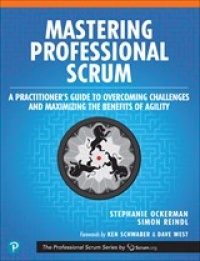
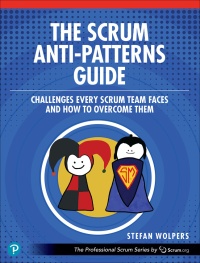
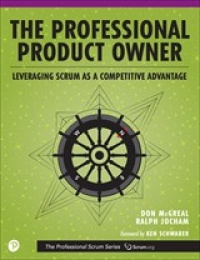
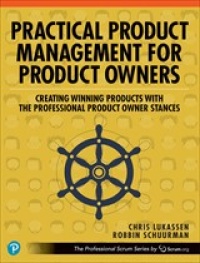
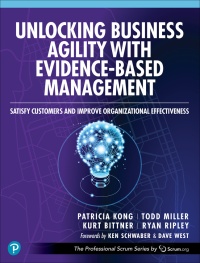
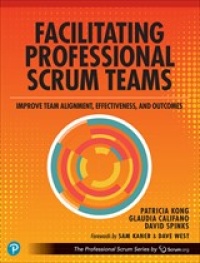
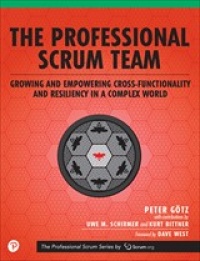
c92e.jpg)
